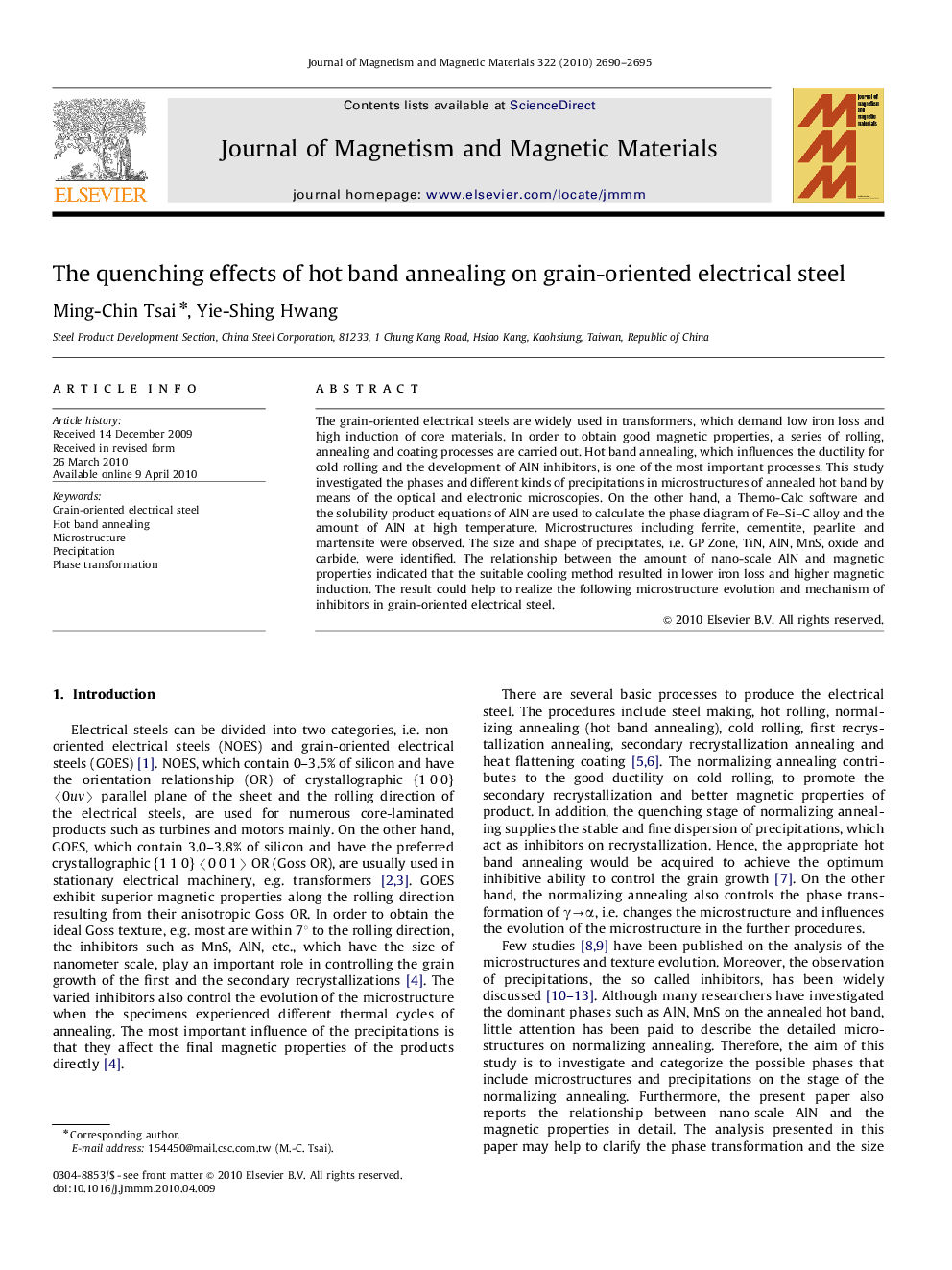| Article ID | Journal | Published Year | Pages | File Type |
|---|---|---|---|---|
| 1800990 | Journal of Magnetism and Magnetic Materials | 2010 | 6 Pages |
The grain-oriented electrical steels are widely used in transformers, which demand low iron loss and high induction of core materials. In order to obtain good magnetic properties, a series of rolling, annealing and coating processes are carried out. Hot band annealing, which influences the ductility for cold rolling and the development of AlN inhibitors, is one of the most important processes. This study investigated the phases and different kinds of precipitations in microstructures of annealed hot band by means of the optical and electronic microscopies. On the other hand, a Themo-Calc software and the solubility product equations of AlN are used to calculate the phase diagram of Fe–Si–C alloy and the amount of AlN at high temperature. Microstructures including ferrite, cementite, pearlite and martensite were observed. The size and shape of precipitates, i.e. GP Zone, TiN, AlN, MnS, oxide and carbide, were identified. The relationship between the amount of nano-scale AlN and magnetic properties indicated that the suitable cooling method resulted in lower iron loss and higher magnetic induction. The result could help to realize the following microstructure evolution and mechanism of inhibitors in grain-oriented electrical steel.
